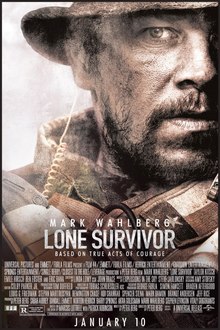
LONE SURVIVOR: 2013: ++: ACT: This movie reminded me a lot of Act of Valor due to the fact that it was based on a true story and depicted the Navy Seals in intense action sequences.
In addition, it gave us a deep and sometimes troubling look at what soldiers endure in the course of modern warfare. No one will debate that war is atrocious and puts humanity in an intense conflict where morality is compromised.
Lone Survivor attempts to depict that in a striking fashion through it's action, brutal special effects, and moral conflicts. One significant conflict was when they encounter villagers and decide not to kill them but let them go. This sets up the scenes of heavy gun fire.
One of the moral dilemmas the movie addresses.
The action in this movie was non-stop. This isn't to say that it was 70% of the movie. It was almost 90% of the movie. How do you infuse a plot structure when there is so much action and little dialogue? At times, this movie leaves you questioning that.
Act of Valor did a great job giving you both. It had adequate character building, plot structure, background, and conflict, while still including some excellent and engaging action sequences. The question is why didn't Lone Survivor do this?
The characters are developed during respites in the action.
Is it enough though?
The Seals in Lone Survivor get brutalized. Not that they don't efficiently terminate their share of the enemy, but this movie demonstrates how precarious the scenarios are for the Seals, who are often the first infiltrators to conduct classified ops deep behind enemy territory.
The Seals often have to jump off cliffs to escape.
The scenes where they literally jump off the cliffs were hard to watch, but had excellent effects. Utilizing "rag doll" physics, the viewer really felt like they were seeing bodies collide into unforgiving boulders. The scenes with the head shots and bullet injuries were very realistic as well. The sound was unreal in this movie and I was glad to turn it up!
The initial and most significant action sequence lasted over 40 minutes. I liked the part where the sniper declares he is "The Reaper". The way the enemies move was depicted very realistically and shows just how out numbered they were in the movie. This was crystalized when one of the Seals comments how fast they moved in a delirious state.
The "Reaper" in action.
Then there is a period where they are being pursued, and then there is another period of action for about 20 minutes. The plot doesn't start to develop until Mark Walberg meets an Afghani that tries to save him and bring him to his village.
Not all the Afghanis are trying to kill Walberg who plays Marcus.
Some Afghanis believe that a visitor should be protected when they are in their village. This is referred to Pashtuwali and it's a code that saves Marcus, the main character played by Mark Walberg.
One of the take home messages was that the communication was faulty in the field as was the confusion with the Apache helicopters which weren't authorized to engage. When they do engage, one of them with the commander, Eric Bana, is shot down. Could this be indicting that there were logistical issues that caused this tragedy?
There are many communication issues and breakdowns.
I just feel that if there was more character development and plot structure, the action sequences and overall movie would have been more significant. On the other hand, this movie does hit a critical nerve at the end when it shows the actual soldiers who were lost in battle, so I wasn't disappointed. Perhaps the movie was trying to depict exactly what happened instead of providing back fill or other dramatic elements::76%
THE REAL HEROES
No comments:
Post a Comment